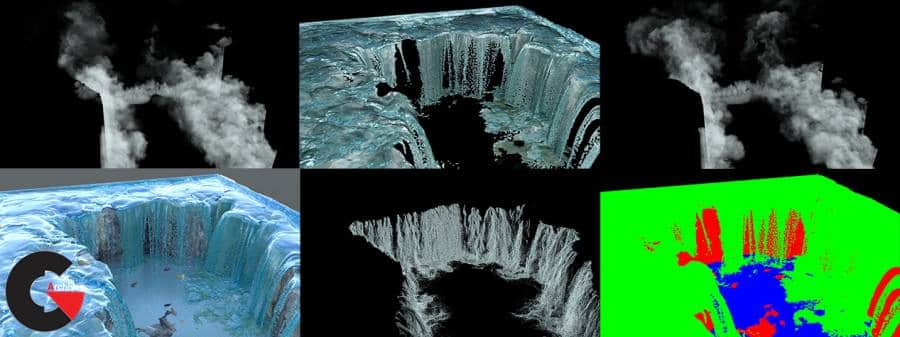

Objects, for example, are able to provoke waves from interactions they can contribute to foam-maps or generate splash particles. RealWave is a powerful wave simulation toolset for small to mid-range ocean surfaces with versatile features. Additionally it is also possible to continue processing the particles to create foam or spray. This mesh finally becomes shaded in your 3D application to render the fluid. The stored BIN files are normally used to create a polygon mesh inside RealFlow representing the three dimensional volume of the fluid. You can find out more about RealFlow’s export options with standard emitters and the Alembic format under “Export Central”.

This file type allows you to export selected data channels, has a hierarchical approach and is supported by many 3D applications.

A very convenient and straightforward method to export particle data comes with the new Alembic format. Other formats, such as PD, allow the user to store specific information, for example density or pressure. The standard format is called “BIN” and stores a complete set of position and physical data. Another, more advanced feature, is their scripting capability: RealFlow emitters can be completely customized and theoretically it is even possible to write your own fluid engine.Īn emitter’s particles can be stored in different file and data formats for further use. RealFlow emitters can interact with all kinds of solid or soft bodies and RealWave objects. These standard emitters show a very high level of detail, are easy to use and can be affected by any daemon to react with various forces. In contrast to RealFlow’s grid fluid emitters, this type is mainly suited for small to mid range simulations. The technology behind our standard particle fluid emitters is called “Smoothed Particle Hydrodynamics”, also called SPH.
Adobe realflow full#
With this advanced feature you can achieve absolutely realistic results, utilizing the full power of your network machines. Due to the large amount of particles, all secondary elements are normally simulated as a post process in a network. RealFlow calculates the conditions for splash, foam and mist formation, and automatically creates and controls these elements. With Hybrido, fluid artists are able to simulate impressive shots, like oceans with breaking waves, huge floods, turbulent coasts with cliffs and rocks, or ships travelling through turbulent water during a heavy storm. But, it has always been difficult to fill large areas and volumes with fluids and add secondary effects such as spray.


 0 kommentar(er)
0 kommentar(er)
